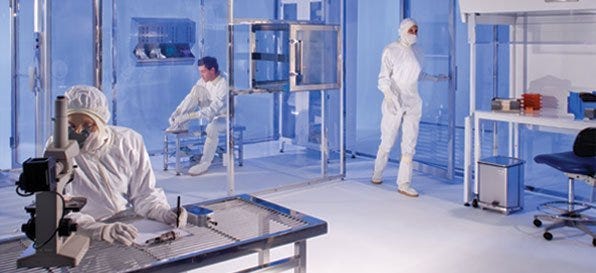Cleanrooms Become "Greenrooms"
With an increase in corporate social responsibility and environmental awareness, cleanrooms are doing their part to make the world a better, more eco-friendly place with their green initiatives. As the world continues to evolve and shift into a more environmentally friendly thought process, cleanrooms have evolved as well.
In an effort to take environmental responsibility, the initiatives of cleanrooms include efforts to eliminate unnecessary excess operational waste, conserve natural resources, and to produce products which are more environmentally friendly. These world-wide green initiatives have also become expectations of corporations, consumers and government mandates.
The particular focus and key concepts for cleanroom initiatives include:
- Reduce
- Reuse
- Recycle
- Biodegradability
When it comes to recycling, the ultimate goal would be to recycle, but when recycling is not possible, then biodegradability is of utmost importance. Before cleanroom experts took action, data was analyzed. Cleanroom experts took into consideration the use of common cleanroom materials and their biodegradability, as well as their recyclability. These materials included: synthetic fibers or yarns, cellulosic fiber, cotton fibers or yarns, regenerated cellulose, corrugated cartons, plastic bags or pouches, plastic canisters, and cleanroom bond paper. Other areas of focus included waste of air, energy efficiency, and recycling cleanroom garments, boot covers, hairnets and laboratory gloves.
3 Cleanroom Sustainability Initiatives that May Surprise You
Reduction of Air Waste by Reusing Air: Due to the fact that the air inside of a cleanroom is not free, and given the immense expense that goes into treating air for a cleanroom, cleanrooms now utilize “green air” through the use of Fan Filter Units. These filters allow cleanrooms to reuse air that was once disposed of as waste and continuously circulates this air to allow for the maintenance of temperature, humidity and cleaner air. Reducing the waste of air is both cost-effective and greatly reduces any environmental impacts.
Reduction of Cleanroom Materials Waste: Through innovative single-use garment recycling programs, cleanrooms have stepped up their sustainability game, taking recycling cleanroom materials to an entirely new level. Single-use cleanroom materials such as garments, hairnets, laboratory gloves, and boot covers are now recycled and turned into eco-friendly products for consumers. Products produced from recycled single-use cleanroom garments include plastic benches and chairs, bulk plastics and much more. More than 99% of manufacturing waste has been diverted from landfills through these new recycling initiatives with the goal of zero waste by the year 2015.
Modular Cleanrooms – Smaller Cleanrooms with Less Materials – Energy Efficiency: Cleanrooms are controlled environments which are extremely energy dependent and resource dependent and in an attempt to make cleanrooms more energy efficient, modular cleanrooms make this a realistic achievable goal. The goal by building modular cleanrooms is to reduce materials and waste when building. Focus has been primarily drawn to the building of new, smaller modular systems utilizing less materials, which reduces a cleanrooms overall energy footprint to the environment. Building small is better for the environment and if more space is needed in the future, the facilities can always upgrade later. An overbuilt cleanroom facility is extremely resource and energy-intensive.
Cleanrooms Continue to Stride Ahead with Green Initiatives
The green benefits of cleanrooms are many and environmental control has always been a priority for cleanrooms. However, efforts have greatly increased in regards to environmental responsibility over the years as the world continues to evolve and stride ahead towards achieving the goal of a more sustainable world. And as the world continues to evolve, cleanrooms will continue to do their part and always look for ways to make the world a better place by reducing waste, recycling and reusing.



